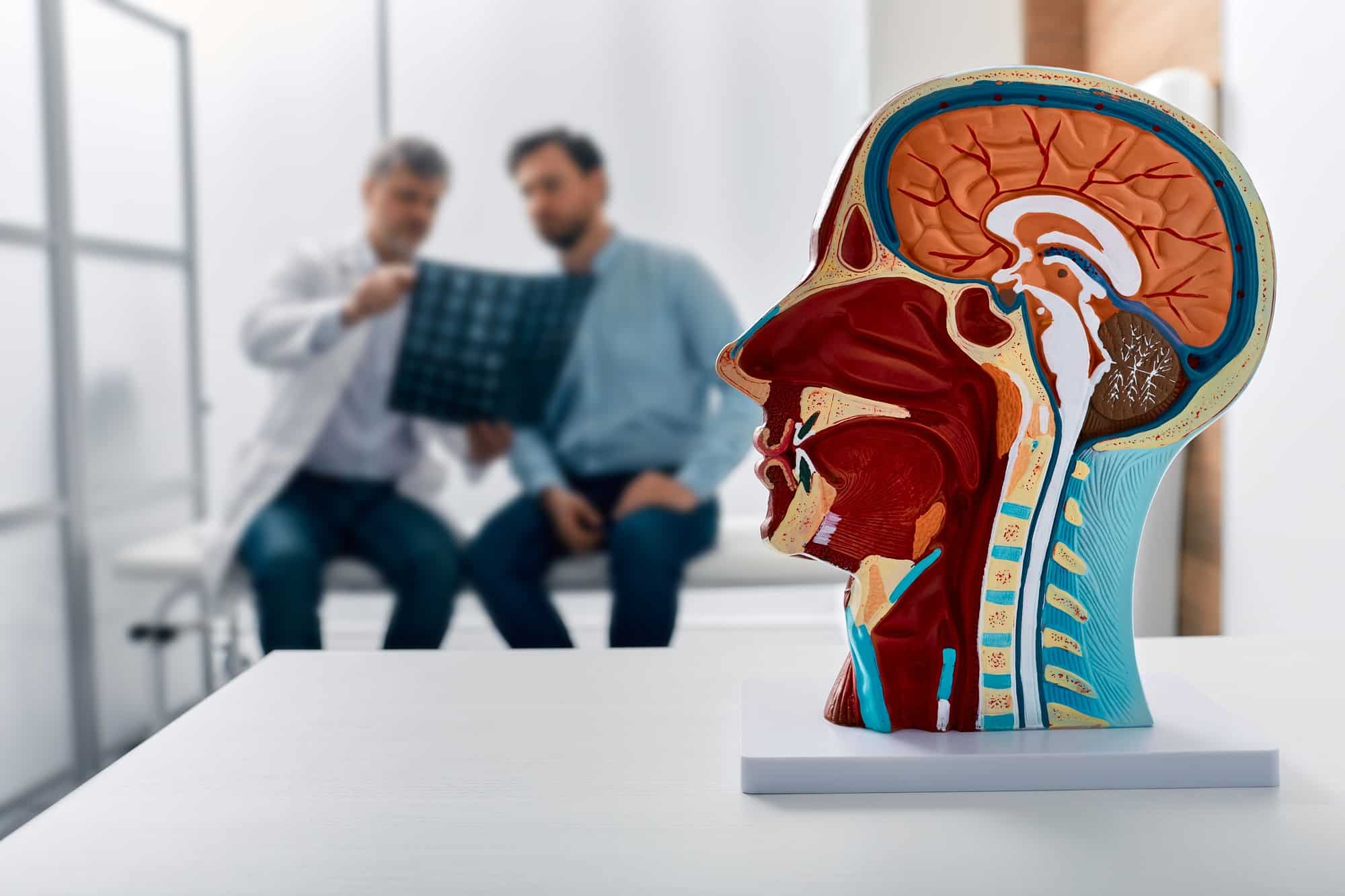Frontotemporal dementia (FTD) is a rare type of dementia but is one of the most common dementias of young people usually targeting people in their sixties. Unfortunately, there is no cure, but novel new experimental therapies are on the horizon that may help says a recent article out of Nature.
What is Frontotemporal Dementia (FTD)?
Frontotemporal dementia (FTD) is a group of brain disorders that damages the neurons (nerve cells) of the frontal and temporal lobes of the brain and over time can shrink the brain. It tends to be progressive meaning it gets worse over time. The hallmark of frontotemporal dementia is changes in social interaction, personality and aphasia, or difficulty with speaking and communication.
FTD makes up 10-20% of dementias so is considered rare however is a leading type of dementia in younger people. Originally called Pick’s Disease now evolved to include a broader category of frontotemporal dementias. The most common type of dementia is Alzheimer’s disease making up 60-80 % of cases says the Center for Disease Control and Prevention (CDC). Alzheimer’s usually effects older adults targeting memory and higher cognitive functions unlike FTD that may preserve memory and certain higher-level thoughts especially in its early stages.
Frontotemporal Dementia (FTD) effects people between the ages of 45 to 65 but sometimes as early as age 30. FTD can also strike older adults and impacts women and men equally. Why it happens in certain people is unclear but 10-25 % may be caused by a specific gene with another 40 % having a family history of dementia or psychiatric conditions but most have no family history.
What are the symptoms of Frontotemporal Dementia?
Symptoms depend on what part of the brain is damaged, can occur in combination, and may be more or less severe. People may have changes in their personality. They can become socially inappropriate and may be impulsive, or emotionally indifferent, and others with changes in speech.
Symptoms includes loss of inhibition, apathy or loss of motivation, compulsive actions like repetitive movements, clapping of hands, taping of feet or pacing, changes in diet or mouth centered behaviors, and some loss of executive function. Loss of executive function means things like planning, solving problems or staying organized but other functions like how you process information, or memory may not be affected until later on.
People with nerve loss in the frontal lobe located behind the forehead has symptoms that impact movement, social skills, spoken language, and self-control. Nerve loss in the temporal lobe found on the side of brain may have symptoms in understanding spoken language and emotional expression and processing.
What are the different types of Frontotemporal Dementia?
There are different types, depending on where the nerve damage is including the most common Behavioral Frontotemporal dementia variant (bvFTD) that may at first seem like subtle personality changes or go unnoticed over time leads to progressive changes in behavior and personality. Another is primary progressive aphasia (PPA) with two types one showing problems with grammar and forming words, individual words and simple sentences are understandable but complete sentences can cause confusion, and another type with problems in choosing and understanding words
It’s hard to estimate the number of people with FTD as likely is under reported but estimated at 15-22 out of every 100,000 people. This is likely an underestimate given the complexity of properly diagnosing this condition, as there are different ways of presenting, and recognizing symptoms.
Are there specific tests for Frontotemporal Dementia (FTD)?
A healthcare provider, usually a neurologist can diagnosis FTP based on the clinical symptoms, medical history, imaging, and neurological exam however there’s not one specific test for FTD and frequently is misdiagnosed as Alzheimer’s disease, Parkinson’s disease or a psychiatric illness. On average it may take up to 3.6 years for an accurate diagnosis to be made. Neuropsychological testing can better determine the cognitive impairment and to also exclude psychiatric causes for a person’s symptoms as tests more detailed thinking, language and memory.
Brain imaging including an MRI is important as may show a pattern of brain atrophy or shrinking including “knife-edge atrophy,” of the frontal and temporal lobes suggestive of FTD. There are also more specialized imaging that can be done if the diagnosis is still uncertain.
Genetic testing may also be important if there is a strong family history or a genetic cause is suspected, and may include testing for Tau, Progranulin or GRN, or C9ORF72. In fact, a recent article in Nature showed that people with the GRN or granulin gene makes less progranulin and by “boosting,” levels with a new genetic medication may halt the disease progression as low levels cause more brain inflammation and damage. Clinical trials are also underway for anti-Tau drugs, and compounds that impact C9ORF72 and may also slow the disease process.
Is there treatment for Frontotemporal Dementia?
Despite new experimental therapeutics seen in Nature, and others down the pike to treat genetic forms of FTD, there is currently no cure available but there may be medications or behavioral therapies that can help with symptoms including certain anti-depressants and people experiencing difficulty with language may benefit from speech therapy. Care givers are important for the well-being of the patients especially as the disease progresses and can help with activities of daily living.
Risk factors to develop FTP may include head injury and having a head injury triples your risk of getting it. It’s important if you participate in risky activities that you wear a helmet and also when driving to wear a seatbelt to lessen the chances of a possible head injury.
What is the prognosis for Frontotemporal Dementia?
Frontotemporal dementia tends to be a progressive group of disorders meaning the brain and symptoms get worse over time but can vary by type and in each individual. The rates of progression are much less predictable than in other forms of dementia and may be periods where symptoms appear and then stabilize.
Memory is usually not a problem until later as effects speech and behavior primarily with some types effecting motor function or movement however over time it will be more difficult to control behavior, ability to speak, and to understand others when they speak. People may also develop lack of insight as time goes and in later stages may disrupt the ability to think, care for themselves and live independently. They may eventually have difficulty with basic self-care, such as, eating, dressing, and hygiene and may require 24/7 help.
The life expectancy varies based on how fast an individual progresses and when diagnosed as may be later on the disease, but the average life expectancy is about 7.5 years but can progress faster of slower and in some less than 2 years and other can live more than 10 years. The cause of death is not from the dementia itself but from complications of the dementia including pneumonia due to difficulty swallowing as the disease gets worse.
Any more on Frontotemporal Dementia (FTD)?
Frontotemporal Dementia or disorder is group of neurodegenerative diseases that ravages the frontal and temporal lobes of the brain leading to atrophy or shrinking of the brain that tends to be progressive. It’s a rare type of dementia but most common in younger people affecting those in their sixties and may be challenging to recognize and diagnosis in its early stages.
It was not a widely publicized disorder until Bruce Willis announced that he was diagnosed with the cruel disease, Frontotemporal Dementia in 2023 with sympoms that initially affected his speech with aphasia, and a return of his childhood stutter. FTD as the family stated is likely more prevalent then thought and this announcement although painful has created national awareness of a largely unrecognized disease. Our hearts, and prayers go out to Bruce and his family. As an aside, there is exciting new research that may have located a common brain network causing stuttering regardless of cause (stroke, neurological condition, or developmental) opening up new possibilities for treatment.
If you feel you have symptoms or know of someone with symptoms suggestive of Frontotemporal dementia (FTD) discuss with your doctor or neurologist, a specialist in diseases of the nervous system as may require further testing to properly diagnosis this disorder or other neurological conditions as early detection is important.
If you have questions AskDoctorH as we are here to help.




 Have Questions? AskDoctorH
Have Questions? AskDoctorH